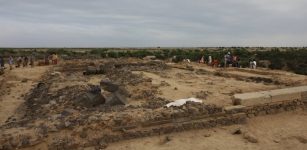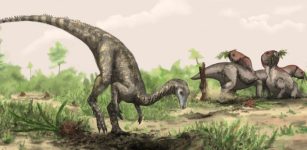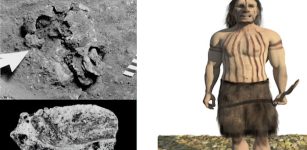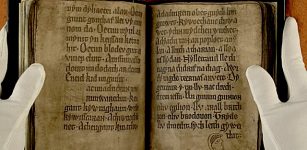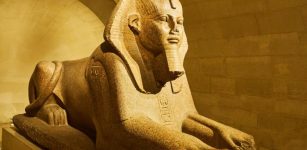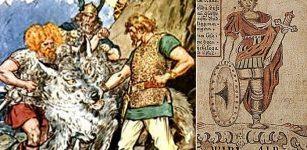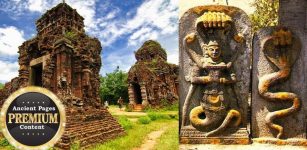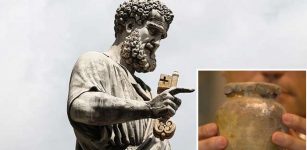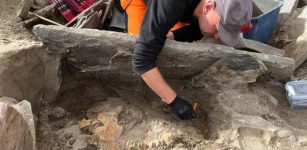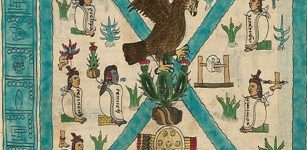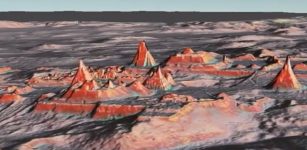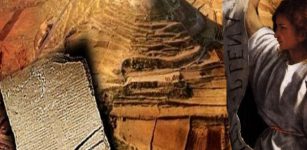Ancient Greek Inscription Could Reveal Biblical Saint Peter’s Birthplace – Archaeologists Say
Jan Bartek - AncientPages.com - Archaeologists have discovered a curious, ancient inscription near the Sea of Galilee. The ancient Greek inscription uncovered by archaeologists from Kinneret College in Israel and Nyack College, NY, led by Professor Mordechai Aviam and Professor Steven Notley, may reveal the Biblical Saint Peter's birthplace, the scientists said.
This inscription ties the church built here to the Church of the Apostles dedicated St Peter adding to the evidence the site is Bethsaida, the birthplace of Saint Peter and Saint Andrew: Image Credit: Zachary Wong
The large Greek inscription was unearthed during excavations of what is being called the "Church of the Apostles," a Byzantine period basilica at el Araj/Beit haBek believed to be built over the Apostles Peter's and Andrew's home.
The inscription was translated by Professor Leah Di Segni (Hebrew University) and Professor Yaakov Ashkenazi (Kinneret College). It references a donor, "Constantine, the servant of Christ," and continues with a petition for intercession by St. Peter, "chief and commander of the heavenly apostles."
Framed with a round medallion made of two lines of black tesserae, the inscription forms part of a larger mosaic floor in the church's diaconion (sacristy) that is partly decorated with floral patterns. The el Araj/Beit haBek site is located in the Beteiha nature preserve, and the Israel National Parks Authority made assistance.
The title "chief and commander of the apostles" is routinely used by Byzantine Christian writers to refer to the Apostle Peter. "This discovery is our strongest indicator that Peter had a special association with the basilica, and it was likely dedicated to him. Since Byzantine Christian tradition routinely identified Peter's home in Bethsaida, and not in Capernaum as is often thought today, it seems likely that the basilica commemorates his house," said Steven Notley, academic director of the dig.
This discovery also bolsters the basilica's identification with the church described by the 8th-century bishop of Eichstätt, Willibald, who reported that it was built over the house of Peter and Andrew.
"One of the goals of this dig was to check whether we have at the site a layer from the 1st century, which will allow us to suggest a better candidate for the identification of Biblical Bethsaida. Not only did we find significant remains from this period, but we also found this important church and the monastery around it," says archaeologist Mordechai Aviam, archaeological director of the excavation.
The Roman remains that have been excavated bear witness to the testimony of Flavius Josephus (Jewish Antiquities 18:28) that the village became a small polis called Julias that existed until the 3rd century CE. Altogether, these finds continue to strengthen the identification of el Araj/Beit haBek with the ancient Jewish village of Bethsaida.
See also: More Archaeology News
Excavations will resume in October when the cleaning of the entire church will be completed with the aim to answer the question of its different phases and perhaps uncover additional inscriptions.
Written by Jan Bartek - AncientPages.com Staff Writer





